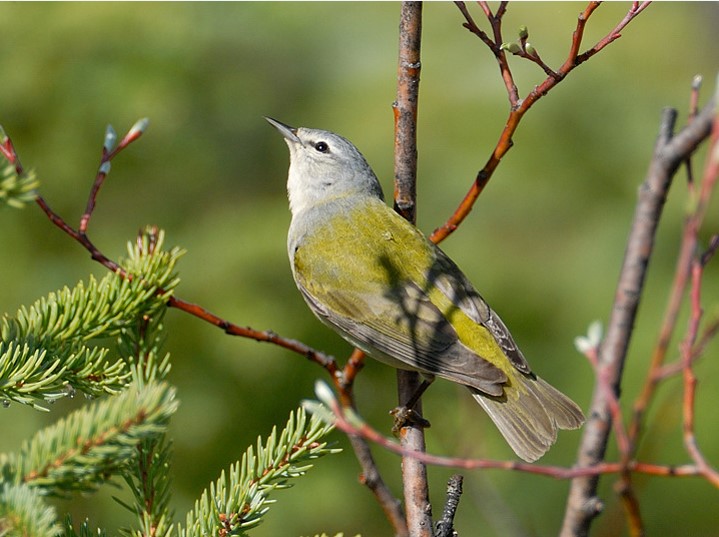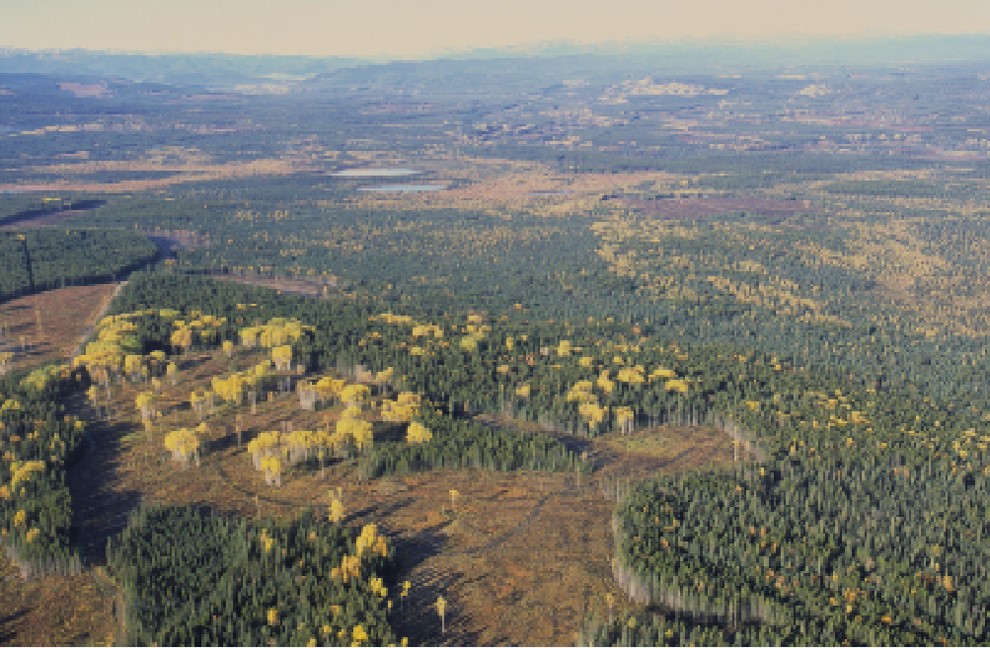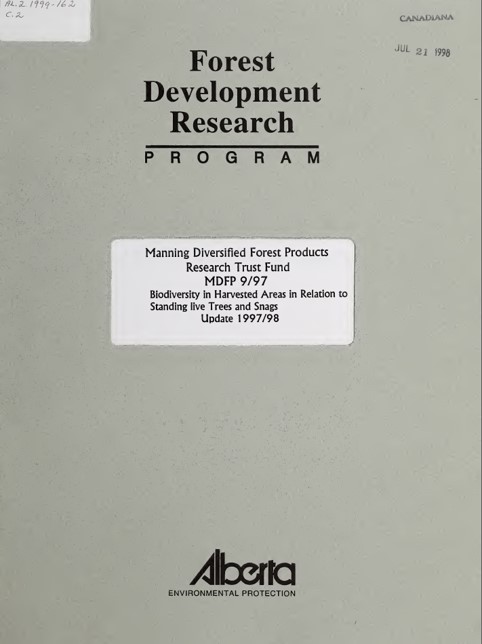Overview
The key to a strong chain is to find and remove the weak links. EBM is based on a chain of links that can be strength tested. A key link is that harvest practices that mimic natural disturbances will restore biodiversity. One of these practices is to leave patches of live trees, dead snags and fallen trees behind. This study tested whether and how these practices work to support bird populations. The answer is that these patches need to be a minimum size and particular distribution to work for many bird species. This link is not weak, but could be stronger.

Photo credit: fRI Research
Background
One of the earliest innovations in natural disturbance forestry was to structure cutblocks to mimic how fires pass through forests. When forests burn, often large and small patches of trees get skipped due to sudden wind changes, topography, tree species or moisture conditions. Post-fire, these “skips” or “residuals” were found to be important habitats for wildlife dependent on mature forests for survival.
Intentionally skipping patches of merchantable trees in cutblocks was beginning to be included into harvest plans in the 1980s. The assumption was that this practice, which mimicked wildfires, would benefit wildlife in the harvest area as it created habitat islands and movement corridors just as in wildfires.
In the 1990s, this practice became more common. Forestry companies varied in how they did residual retention with differences in density, distribution, type and composition. This invited research to see which practices worked best for target species. Heeding that call, researchers from three separate organizations (AlPac, Alberta Research Council and the Alberta Conservation Association) combined efforts to come up with a comprehensive study of residual characteristics (size, shape, composition, distribution) that affect bird communities. By studying bird communities in retention stands from three separate forestry operations in central Alberta, they were able to uncover some important patterns of effective and ineffective harvest practices.

Photo credit: fRI Research
Innovation
The elements of EBM, like operational practices that incorporate natural disturbance patterns, need to be tested. As intuitive as this seems, in forest systems with long latency between cause and effect, such tests are difficult and expensive. The innovation of this study that is reflected in the number of times it has been subsequently cited, is the recognition in 1997 that the time was right to start and the teaming up in 2000 of three independent studies to create enough critical mass to answer important EBM questions.
Discovery
Harvest blocks where more large deciduous trees were retained in clumps, bird communities were more similar to those found in old-growth forests. Thus, by retaining clumps of large trees and snags in harvest areas, managers create habitats that are used by old-growth forest bird species. As with some other studies, while the composition of the bird community was most similar between effective retention harvest and old forest, for many forest birds, density was lower in cut-blocks with residual trees and snags than it was in old forest. Because survival and reproductive success of forest birds in cut-blocks with residual trees and snags was not determined, the authors urge caution in extrapolating these results to suggest successful habitat for old forest bird species is created in retention blocks.
Where in the wheel?
Coarse filter management is thought to be the most effective approach to implementing EBM at landscape scales. This means looking after the big picture and letting the small picture take care of itself. Deduction suggests that this should work, but enough has been changed by management in the past 150 years in the western boreal forest, that testing this assumption is important. Hence, considering natural patterns and natural range of variation in the earliest stages of landscape planning requires knowledge that coarse filter, natural patterns will restore biodiversity. This is fundamental to EBM and what this case study pursued.


